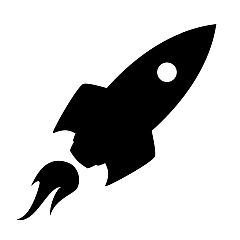Deutsch: Technologiereifegradstufe (TRL) / Español: Nivel de Madurez Tecnológica (TRL) / Português: Nível de Maturidade Tecnológica (TRL) / Français: Niveau de maturité technologique (TRL) / Italiano: Livello di Maturità Tecnologica (TRL) /
TRL stands for Technology Readiness Level. In the aerospace context, TRL is a Scale used to evaluate the maturity and readiness of a technology for a specific application or environment. The TRL scale ranges from TRL 1 (basic principles observed and reported) to TRL 9 (actual system "flight proven" through successful mission operations).
The TRL scale is used to assess the readiness of a technology for a specific application or environment by considering various factors, such as the level of understanding of the underlying principles of the technology, the extent to which the technology has been tested or demonstrated in a laboratory or other controlled environment, and the extent to which the technology has been demonstrated in a real-world or operational environment.
The TRL scale is commonly used in the aerospace industry to assess the readiness of technologies that are being considered for use in aerospace applications. This can help to identify the potential risks and challenges associated with using a given technology, as well as the readiness of the technology to be deployed in a specific application or environment.
Here is a description of the different levels of the Technology Readiness Level (TRL) scale:
-
TRL 1: Basic principles observed and reported: At this level, the underlying principles of a technology have been observed and reported, but there has been no attempt to create a Prototype or test the technology in a controlled environment.
-
TRL 2: Technology concept and/or application formulated: At this level, the concept and potential application of a technology have been formulated, and a preliminary analysis of the technology's feasibility has been conducted.
-
TRL 3: Experimental proof of concept: At this level, a technology has been demonstrated in a laboratory or other controlled environment, and the basic functionality of the technology has been demonstrated.
-
TRL 4: Technology validated in a laboratory environment: At this level, a technology has been thoroughly tested in a laboratory or other controlled environment, and its performance has been demonstrated to meet the requirements for the intended application.
-
TRL 5: Technology demonstrated in a relevant environment (ground or space): At this level, a technology has been demonstrated in a relevant environment, such as on the ground or in space, and its performance has been demonstrated to meet the requirements for the intended application.
-
TRL 6: Technology demonstrated in a relevant environment (ground or space) and has completed a successful mission: At this level, a technology has been demonstrated in a relevant environment, such as on the ground or in space, and has successfully completed a mission.
-
TRL 7: Technology demonstrated in an operational environment (ground or space) and has completed a successful mission: At this level, a technology has been demonstrated in an operational environment, such as on the ground or in space, and has successfully completed a mission.
-
TRL 8: Actual system "flight proven" through successful mission operations: At this level, a technology has been demonstrated to be flight-worthy through successful mission operations.
-
TRL 9: Actual system "flight proven" through successful mission operations: At this level, a technology has been demonstrated to be flight-worthy through successful mission operations, and it has been used in multiple missions.
Related Articles to the term 'TRL' | |
| 'Electromagnetism' | ■■■■■■■ |
| Electromagnetism in the space industry refers to the study and application of electromagnetic forces . . . Read More | |
| 'Versatility' | ■■■■■■■ |
| Deutsch: Vielseitigkeit / Español: Versatilidad / Português: Versatilidade / Français: Polyvalence . . . Read More | |
| 'Aircraft' | ■■■■■■■ |
| Aircraft: An aircraft is a vehicle that is designed to travel through the air, typically by being propelled . . . Read More | |
| 'LEO' | ■■■■■■ |
| LEO stands for Low Earth Orbit. Low Earth Orbit refers to an altitude range of around 100-2000 kilometers . . . Read More | |
| 'SSA' | ■■■■■■ |
| SSA stands for Space Situational Awareness. It refers to the ability to accurately and reliably track, . . . Read More | |
| 'ISR' | ■■■■■■ |
| ISR stands for Intelligence, Surveillance, and Reconnaissance in the space industry context. It refers . . . Read More | |
| 'JPL' | ■■■■■■ |
| JPL stands for Jet Propulsion Laboratory. It is a research and development center located in Pasadena, . . . Read More | |
| 'ESAC' | ■■■■■■ |
| ESAC stands for European Space Astronomy Centre. It is a research and technology center located in Madrid, . . . Read More | |
| 'Shareholder' at top500.de | ■■■■■■ |
| In the industrial and business world, a shareholder is an individual or entity that owns one or more . . . Read More | |
| 'Flight' | ■■■■■■ |
| Flight is the process of operating aircraft or spacecraft in the air or in outer space. Flight involves . . . Read More | |
